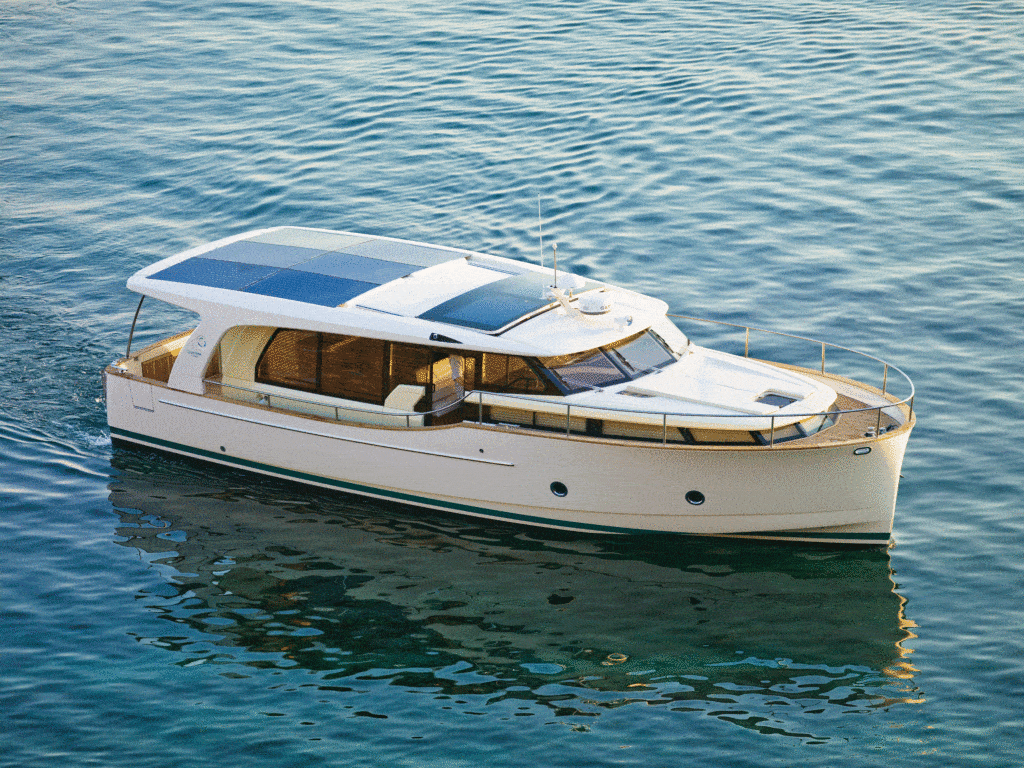
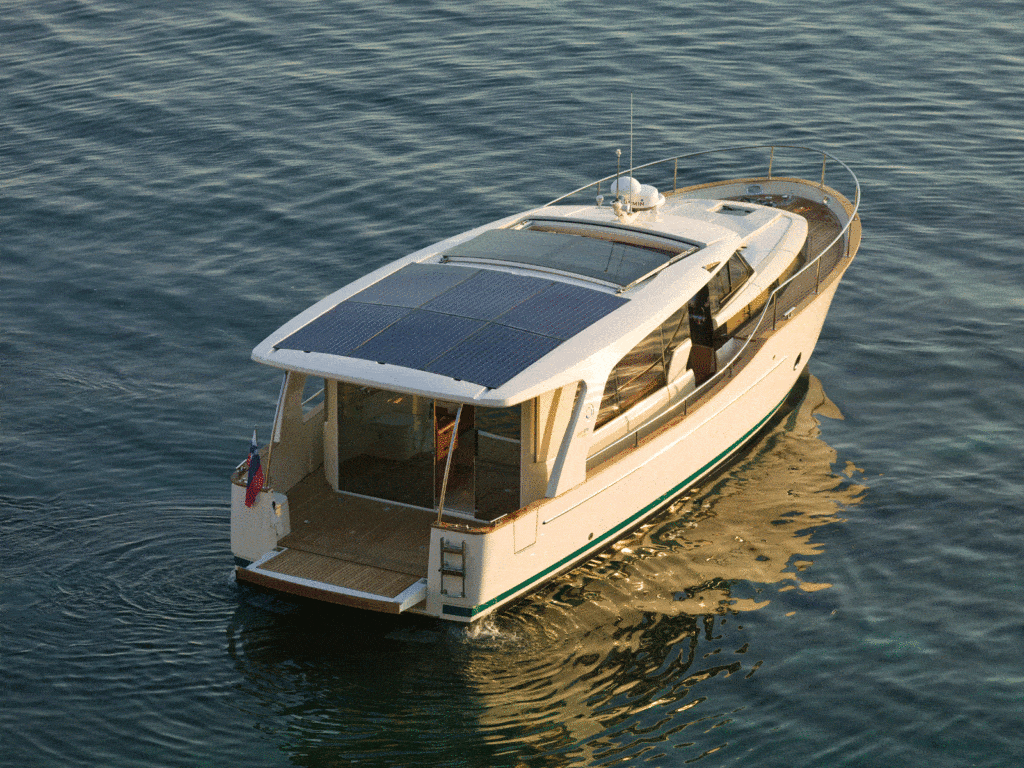
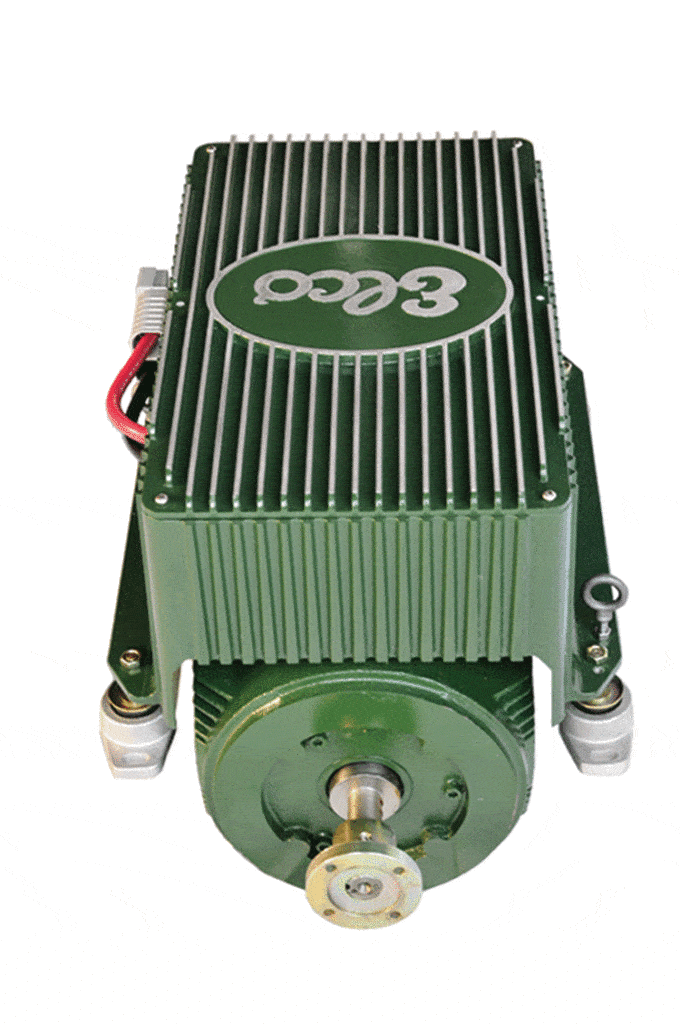
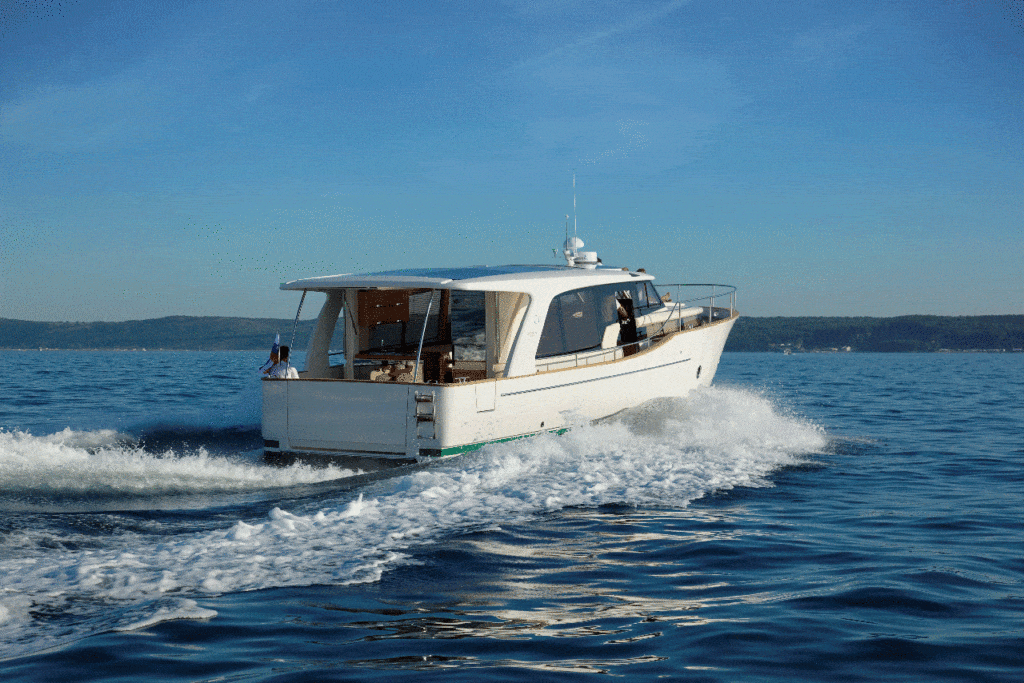
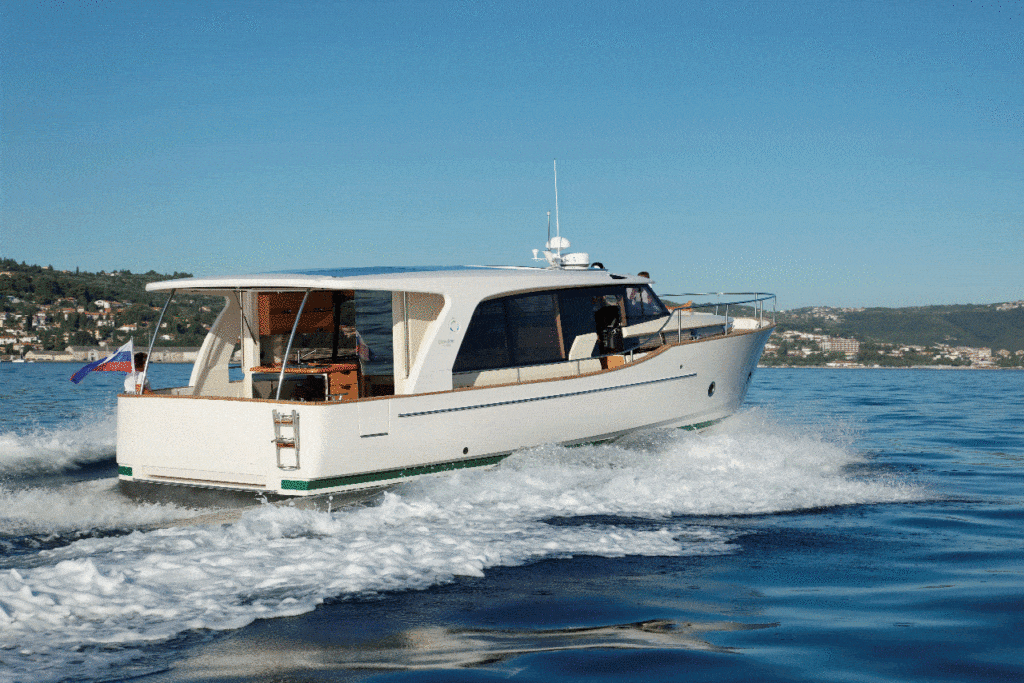
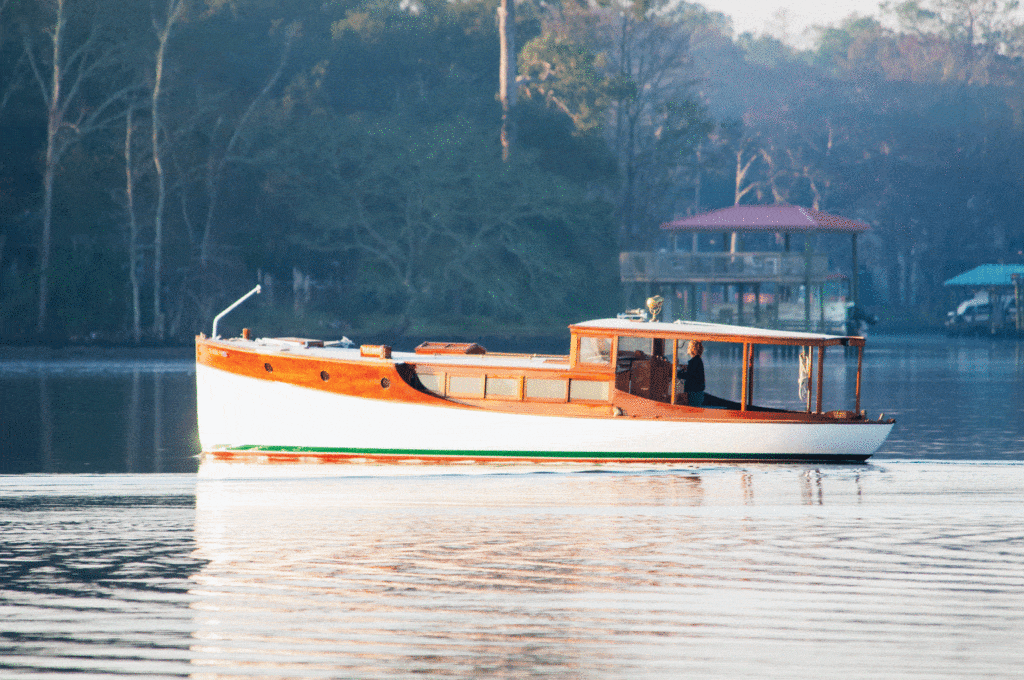
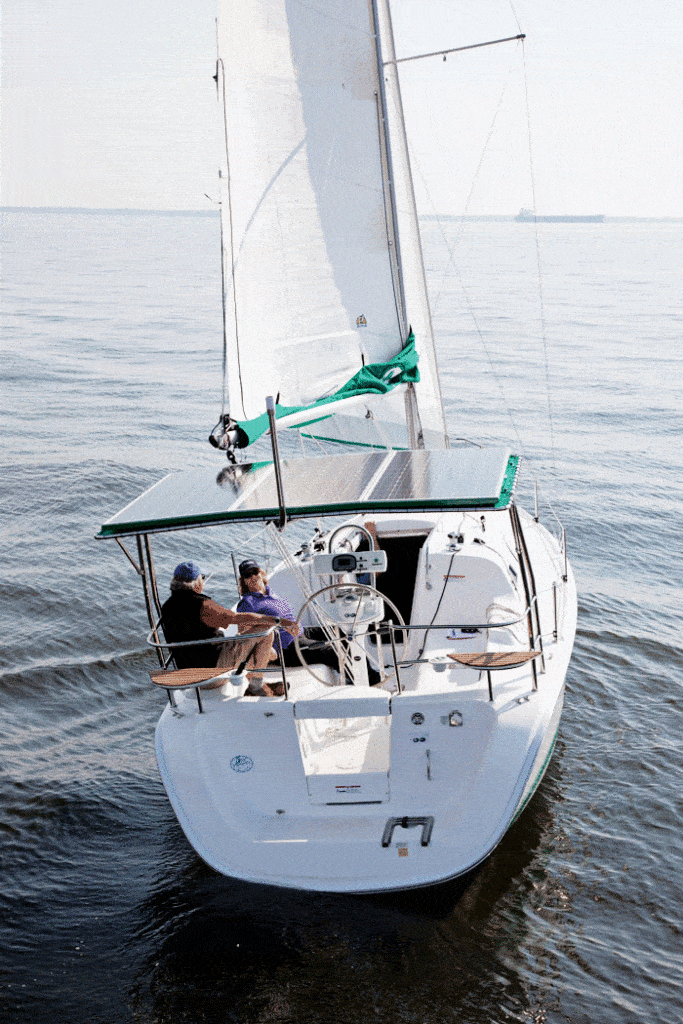
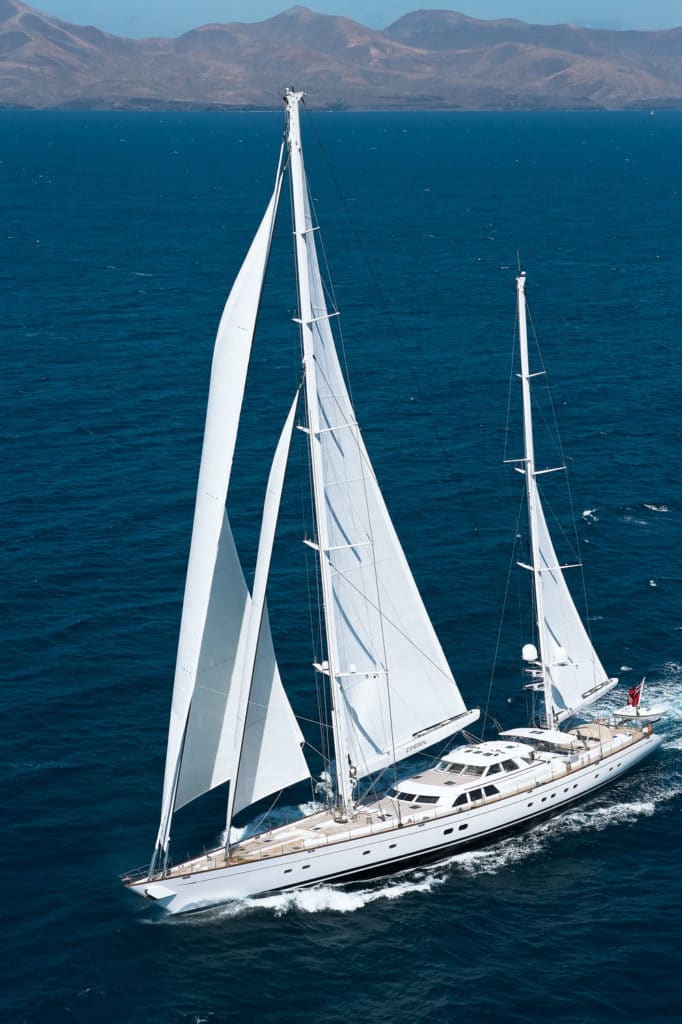
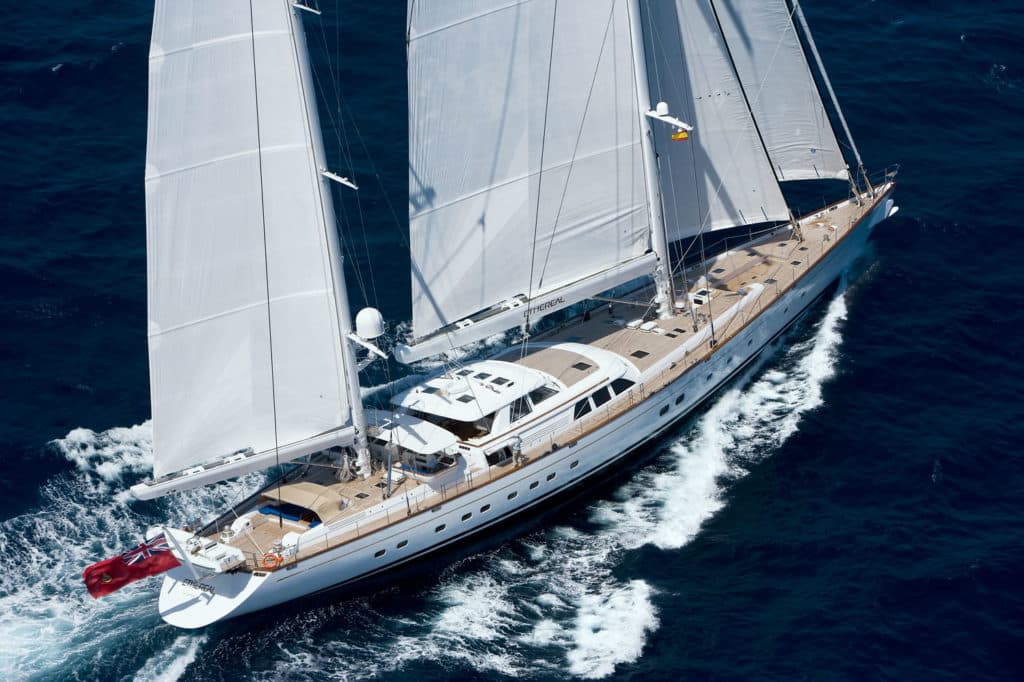
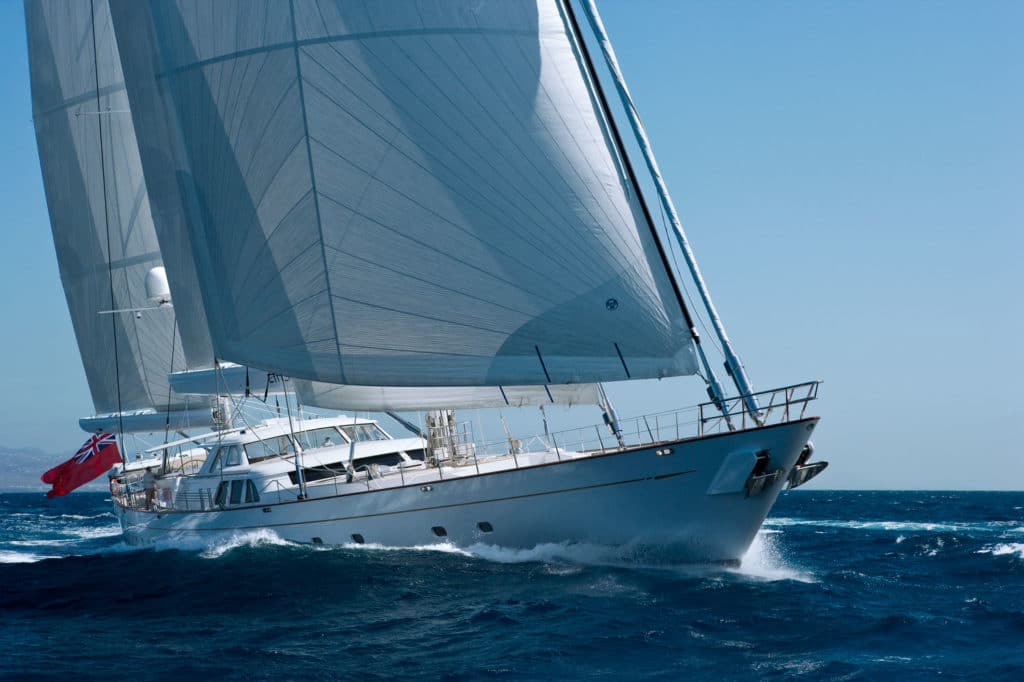
A word that pops up with increasing frequency in the world of marine propulsion is hybrid, and for good reason. The technology offers advantages over traditional diesel-only drives in some scenarios, on both yachts and commercial vessels.
Whether it is right for you depends on a number of factors, but before deciding, it’s necessary to understand what a hybrid system is and how it operates. Let’s start with an explanation of a total electric vessel, in which an electric motor drives the propeller shaft and the power for the motor comes from an electrical storage device.
Today, these storage devices are usually batteries, but research is active on other solutions such as supercondensers.
Such vessels usually have a limited range and are recharged from dockside outlets, but wind-driven generators and solar panels can provide underway charging. Also, some experimental sailboat installations use the propeller to drive a small charging generator when operating solely under sail.
The 100-plus-year-old, diesel-electric (or gasoline-electric) propulsion system has reliably powered everything from locomotives to transit buses to submarines to yachts. One of the largest diesel-electric vessels is the16-year-old, Lürssen-built, 315-foot Limitless. In a diesel-electric installation, a diesel engine drives a generator, much like an ordinary auxiliary generator set.
The generator powers an electric motor connected to the propeller shaft. Larger yachts add more engines, more generators and more motors, with an increasingly complicated switching and control system. On superyachts such as Limitless, the in-port hotel loads such as lighting, heating, cooling, cooking and guest accommodation support can rival the propulsion loads at sea, so using one power system for both situations can be a smart decision.
A hybrid propulsion system is basically a diesel-electric system with the addition of electrical storage devices and enhanced controls. Thus, each hybrid system involves an electric motor, a generator, electrical storage devices, a means to charge them and a control system. It also involves an engine, usually fueled by gasoline or diesel but increasingly by cleaner-burning liquefied natural gas (LNG) for commercial fleets.
There are two main types of marine-hybrid systems: serial and parallel. In a serial system, the electric motor drives the propeller shaft directly, just like on a total electric vessel. The engine, which has no direct connection to the propeller shaft, drives the generator both to charge the batteries and to power the electric motor. The batteries power the electric motor when the engine isn’t running, and the controls keep the whole system working.
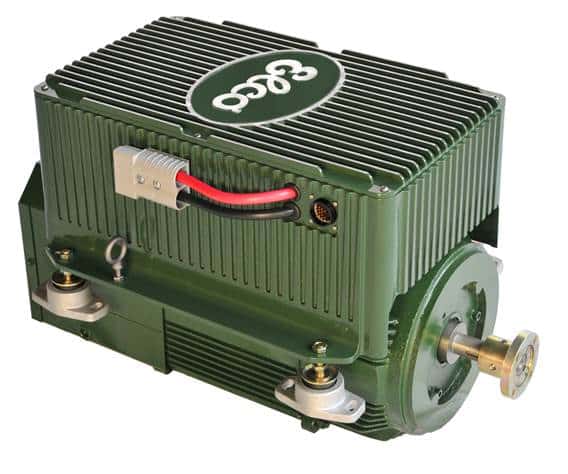
In a parallel setup, the engine is connected to the propeller shaft through a combination motor/generator and a clutching system. The engine can drive the propeller directly without the motor being active, or the motor can drive the shaft with power coming from batteries or the auxiliary generators while the main engine is shut down.
In addition, the main engine can charge the batteries via the motor/generator when it is also propelling the vessel, but its full power is not required for propulsion. It’s a bit more complicated than a serial system, but is more flexible and delivers more overall efficiency.
It is for these reasons that parallel hybrids seem to be gaining in popularity over serial hybrids as the necessary specialty equipment becomes increasingly available. Now, a hybrid marine propulsion system is not the same one as on a hybrid car, although the technology and equipment are similar. The difference is how it operates.
The raison d’être for a hybrid car, pure and simple, is enhanced fuel efficiency. It recaptures the energy that would otherwise be lost in idling at intersections and traffic jams, in braking, in coasting downhill and in constantly varying speed on the highway.
These conditions don’t exist in marine applications, so we must look for other reasons why hybrid propulsion makes sense. For commercial service, where design decisions are largely driven by pure economics, there are increasing numbers of hybrid vessels.
The reasons come from duty cycles on, for example, supply and support vessels for the offshore oil industry and tugboats for harbor service. These spend large amounts of time idling or standing by, more time actively maneuvering, and little time simply cruising.
Additionally, some commercial vessels such as sightseeing and dinner-cruise craft benefit from the elimination of diesel-engine noise, and when they operate in environmentally sensitive areas, the absence of exhaust gas is a plus.
THE BOATS
While hybrid systems make perfect sense in some commercial applications, the picture is less clear regarding yachts. Several yacht builders have occasionally offered hybrid options with mixed results. Ferretti Yachts built a 74-foot Mochi Craft long-range hybrid, a lovely yacht that I had the opportunity to examine in detail with the builder’s engineers in 2008.
The technology was unassailable and the construction was exemplary, but the price premium was about a third above the diesel-only version. It was apparently too much for even the most green-minded shoppers, especially as the yacht’s introduction coincided with the beginning of the worst recession the boating industry has seen. One wonders, though, if such a yacht might succeed better today when the greater availability of equipment would help bring the price down.
Royal Huisman delivered the 190-foot sailing yacht Ethereal in 2009, a masterpiece of both hybrid technology and overall environmental awareness. She utilizes two 300 kW Combimac electric motors for silent running. (The boat also features twin 714 hp Caterpillar C18 diesels.) Only one engine is required to move this 190-footer along at cruise speed, and the propulsion system also charges her main battery bank.
Those electric motors work in concert with silent thrusters for station-keeping, giving swimmers fume-free bathing too. Custom-designed and built for tech guru Bill Joy, she’s a floating test bed for a host of his innovative ideas, as much a research vessel as a personal yacht.
Royal Huisman continues to incorporate some of the technology developed on Ethereal in its current builds, but none has duplicated the complete package found aboard Joy’s yacht.
On the other hand, Elco Motor Yachts has seen a rebirth of its company based largely on electric and hybrid craft. And David Marlow, head of Marlow Marine, is nobody’s dummy when it comes to delivering what customers want.
He added solar-power options to his company’s line of Explorer motoryachts, which range in length from 53 to 97 feet, and offers an electric-propulsion option for the Marlow-Hunter 27 sailboat, so I suspect a hybrid option would not be out of the question should a customer ask.
Greenline, which offers 33-, 40- and 48-foot production powerboats, is perhaps the most successful with the hybrid concept to date. The builder is reportedly working on 55- and 70-foot models. In a written statement, Greenline cites environmental friendliness as the main advantage of its yachts:
“We want to keep our most beautiful boating spots in the same pristine condition as when we first discovered them. We want to enjoy the untouched beauties of the boating world for years to come and pass them on to our children and grandchildren.”
Not only do the boats employ hybrid-propulsion systems, but they also include solar panels on the house top and other “green” measures to optimize efficiency.
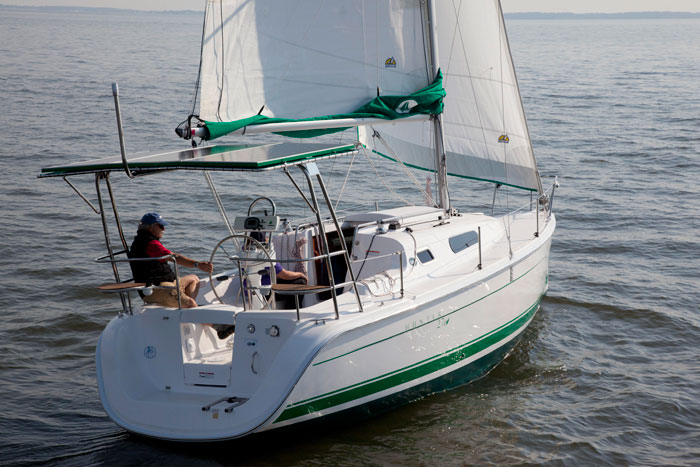
THE RESEARCH
Interestingly, just before the recession, when both the Mochi Craft and Ethereal first saw the light of day, many builders were gaining interest in hybrid-system potential.
The level of activity was such that the American Boat and Yacht Council saw fit to update its technical standard TE-30, “Electric Propulsion Systems.” While the standard does not address hybrid systems specifically, its guidelines on electrical safety should be adhered to by anyone involved in such systems.
Even in those heady pre-recession days, however, in-depth research would have been too expensive and time-consuming for any single company, so an international, multimillion-dollar effort was mounted. Under the auspices of the International Council of Marine Industry Associations, and with the cooperation and support of a host of electrical- and hybrid-equipment suppliers, a research program dubbed HyMar (for Hybrid Marine) was undertaken specifically to study the technology, the environmental reality and the economics of hybrid marine propulsion systems.
On the research team was Nigel Calder, sailor and author of the well-respected Boatowner’s Mechanical and Electrical Manual, and it was his Malo 46 sailing yacht that became the test bed.
In support of meeting clean-air treaties and reducing emissions from marine sources, one of the project’s stated objectives was “reduction of total fuel consumption by 30 percent relative to conventional diesel drive, tending to 90 percent on long-distance sailing boats.”
The HyMar report concludes that “hybrid systems are capable of delivering higher fuel efficiency for propulsion on a cruising duty cycle,” but the reported savings are nowhere near the initial hopes. The report goes on to state, “It is unlikely that hybrid systems will demonstrate enough savings in terms of fuel costs to justify the higher capital costs.” It admits, with surprising candor, that “energy efficiency is more complex than appears at first sight!” In other words, a well-designed hybrid system can offer a number of operational and environmental benefits, and may even be more fuel-efficient than a diesel system in some applications, but most yacht owners will never see an economic payback, and some will see no savings at all.
Those thoughts were echoed by Marnix Hoekstra, naval architect and co-owner of Vripack, one of the world’s largest and most respected yacht design firms, when I spoke to him at the recent Monaco Yacht Show. He strongly supported hybrid systems for use in yachts, much like in commercial vessels, when special operational requirements or desires dictate a need.
He also was quick to point out that most yachts aren’t taking advantage of other measures, such as better hull forms and more sophisticated propellers, that should be implemented before considering hybrid propulsion as an energy-conservation measure.
With a smile, Hoekstra concluded, “If an owner wants to be totally green, he should not build a yacht at all. Short of that, though, there are many things that can be done to improve the impact on the environment. Hybrid drive is only one of them.”
ELECTRIFYING VAGABOND
Few boats featured in the early issues of Yachting still survive, but Vagabond, a 40-foot Consolidated launch that appeared in the 1910 New York Boat Show issue, does.
In 2005, current owners David and Ruth Gillespie rescued her from a Catskills barn where she had sat untouched for 50 years, and they lavished her with the same loving hands-on attention they had devoted to the restoration of Cygnus II, a 56-footer built in 1930 by Jakobson & Petersen of Brooklyn, New York, and several other vintage yachts.
Planning to use Vagabond as a sunset cocktail cruiser on the St. Johns River, they decided to replace her rusted gasoline engine with an electric motor and turned to Huckins Yacht to do the work. Collaborating with Jon Hall, Huckins’ lead designer, the couple selected an Elco motor supplied by a company that predates both Vagabond and Yachting.
When I visited Huckins midway through the project, Vagabond‘s Elco motor, a clean and compact EP-7000 unit with power equivalent to a 70 hp diesel, was just being installed, as were the eight Odyssey PC-1800 batteries, rated at 210 ampere-hours each, that would power her and an ElCon charger with eight-battery balancing.
Hall predicted that underway time at 6 knots would be on the order of five hours, more than enough for the Gillespies’ evening cruises and just enough, as David Gillespie interjected with a laugh, to get them back to Huckins should problems arise. More details of the now-completed project are available in the “Service” section of Huckins’ website. — D.D.









